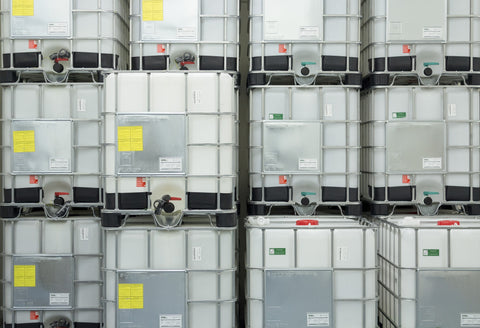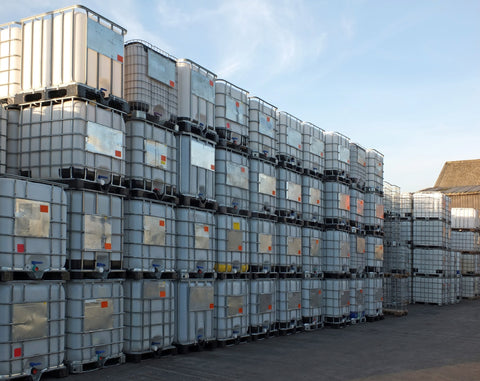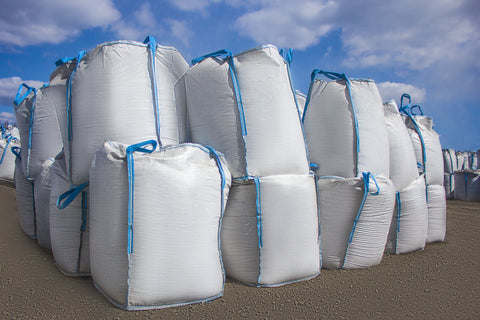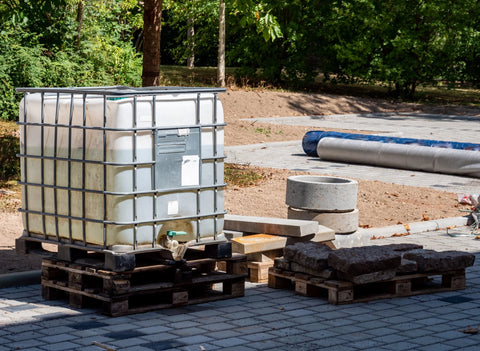Getting to Know IBC Totes
IBC totes are a commonly used method for efficiently and cost-effectively storing and transporting liquids and hazardous materials. But how many gallons actually fit in these large containers? In this article, we'll look at the different IBC tote sizes, examine how many gallons each holds, and answer the question, "How many gallons in a tote?" We'll focus specifically on the popular 275-gallon IBC tote and discuss another common size of 330-gallon capacity.
What is an IBC Tote?
IBC stands for the intermediate bulk container. Intermediate bulk containers are most commonly made of high-density polyethylene or stainless steel and sit atop a heavy-duty base pallet of wood or plastic. The durable construction allows them to be reused many times.

HDPE totes and stainless steel IBC tanks provide an efficient and cost-effective way to store and transport large quantities, reducing freight costs compared to transporting smaller containers. Their standardized base dimensions allow them to be stacked and transported efficiently on trucks, railcars, and ships.
Standardized Base Measurements
The base measurements of IBC totes are standardized, allowing them to be efficiently stacked and transported. Most are 48" x 40" in size.
Common IBC Tote Sizes
There are several common sizes of intermediate bulk containers used around the world:
-
250-Gallon Tote - For slightly smaller loads, the 250-gallon tote is an option.
-
275-Gallon Tote - The 275 gallon IBC is a popular mid-sized option for storing and transporting liquids.
-
330 Gallon Tote- Very similar to the 275 gallon but with extra capacity.
-
550-Gallon Tote - For larger quantity needs, the 550-gallon tote is a common choice.
The 275-gallon and 330-gallon sizes are among the most popular options globally for liquid storage and transportation in IBC totes. However, companies choose capacities ranging from 250 gallons up to 550 gallons depending on their specific needs.
How Many Gallons Are in a 275-Gallon IBC Tote?
The 275 gal tank is a popular-sized container globally. But how many gallons can actually fit inside one?
It can hold up to 275 gallons when filled to the very top. However, it's recommended to leave a bit of headspace when using the tank for liquid transport. This allows for expansion as the liquid moves and prevents overflow.
For storage applications where the IBC tote remains stationary, it's fine to fill it fully to 275 gallons. But for shipping applications, filling the IBC tanks with 260-270 gallons leaves headspace for the liquid to move during transit.
Allowing Headspace Prevents Overflow
Leaving 5-15 gallons of headspace in a 275-gallon tank prevents liquid expansion and movement from causing overflow during shipping. This overflow protection is an important factor for transport uses.
Versatility for Many Liquid Types
These containers were created to store liquids and other materials while using storage space efficiently. They can efficiently store and transport many types of liquids, from chemicals to food ingredients.
Many of these materials can have poor reactions to temperature changes when in storage or while being transported, and there are many products on the market that can ensure total temperature control for totes and tanks.

Key Takeaways
-
IBC totes are large cubic containers used to store efficiently and transport liquids worldwide.
-
Common sizes range from 275 gallons up to 550 gallons or more.
-
They can be the most cost-efficient use for bulk storage and transportation globally for a wide variety of materials.
Determining the Right IBC Tote Size For Your Needs
IBC totes like the 275-gallon size offer an efficient way to store and transport hundreds of gallons of liquids or chemicals. Understanding the true capacity of a tank helps ensure you select the right size for your needs. With their standardized base and durable construction, IBC totes have become an essential method for companies globally to store and ship liquids and hazardous materials cost-effectively.







